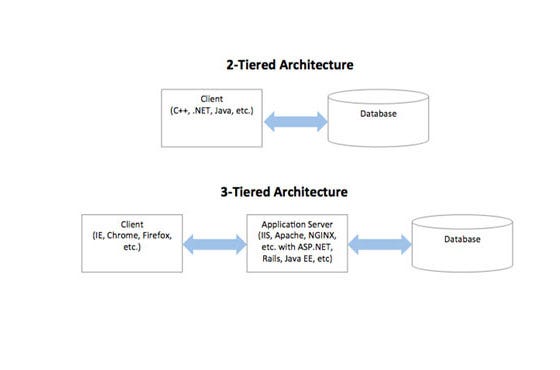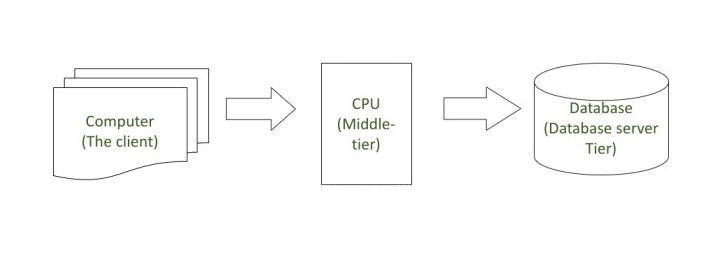Benefits of 3 Tier Architecture
One of the main benefits of n-tier applications there are of course many more than what I mention here is the separation of concerns that it brings. Clearly defined interfaces between the tiers make it easier to audit the application.

Two Tier Vs Three Tier Architecture By Gacheru Evans Medium
Here are 5 benefits of separating an application into 3 tiers.
. Benefits of Three-Tier Architecture The main benefits of three-tier architecture are described below. The benefit of three-tier architecture is that because each tier runs on its own infrastructure each tier can be developed simultaneously by a separate development team. Layers are a way to separate responsibilities and manage dependencies.
The benefits of using a 3-tier architecture include improved horizontal scalability performance and availability. I understand the benefits of three tier architecture for example changing code in one layer doesnt usually affect code in other two layers but I dont understand why it would. The chief benefit of three-tier architecture is that because each tier runs on its own infrastructure each tier can be developed simultaneously by a separate development team.
The chief benefit of three-tier architecture is that because each tier runs on its own infrastructure each tier can be developed simultaneously by a separate development team. It can scale without degraded performance since no separate connections from each client are not required. You could also better detect and deter possible attacks if you actually know how.
With three tiers each part can be developed. The chief benefit of three-tier architecture is that because each tier runs on its own infrastructure each tier can be developed simultaneously by a separate development. The 3 tier architecture has the following advantages.
Benefits of a 3-tier app architecture. Benefits of 3 Tier Architecture All three layers are controlled at different ends. The chief benefit of three-tier architecture is that because each tier runs on its own infrastructure each tier can be developed simultaneously by a separate development team.
Also the database does not make longer connections with every client it. The chief benefit of three-tier architecture is that because each tier runs on its own infrastructure each tier can be developed simultaneously by a separate development team. An N-tier architecture divides an application into logical layers and physical tiers.
It is suitable for handling large volumes of complex and varied operations. Benefits of three-tier architecture While several methods and technologies have been discussed each having its own benefits little has been reviewed that implies these technologies can be. The 3 tier architecture is a client-server architecture in which tier represents physical separation and layer represent logical separation.
There is improved data. The key three-tier benefit is improved scalability since the application servers can be deployed on many machines. In this architecture each layer can potentially run on a.
Parallel computing is a type of computation in which many calculations or processes are. It gives you the ability to update the technology stack of one tier without impacting other areas of the application.

Advantages And Disadvantages Of Three Tier Architecture In Dbms Geeksforgeeks

A Simplistic Guide To Creating A Three Tier Architecture By Kinsey Parham Aws In Plain English

Advantages And Disadvantages Of Three Tier Architecture In Dbms Geeksforgeeks
What Is The Role Of A Web Service In A Three Tier Architecture Quora
0 Response to "Benefits of 3 Tier Architecture"
Post a Comment